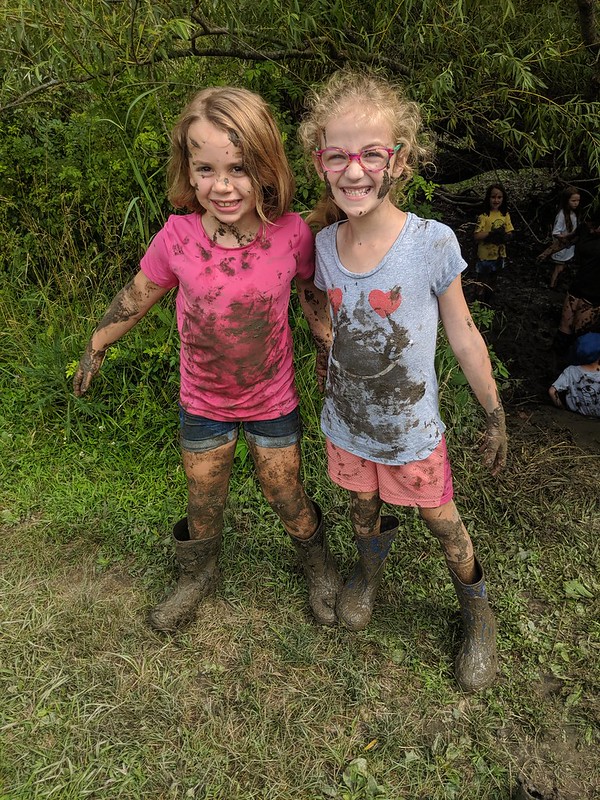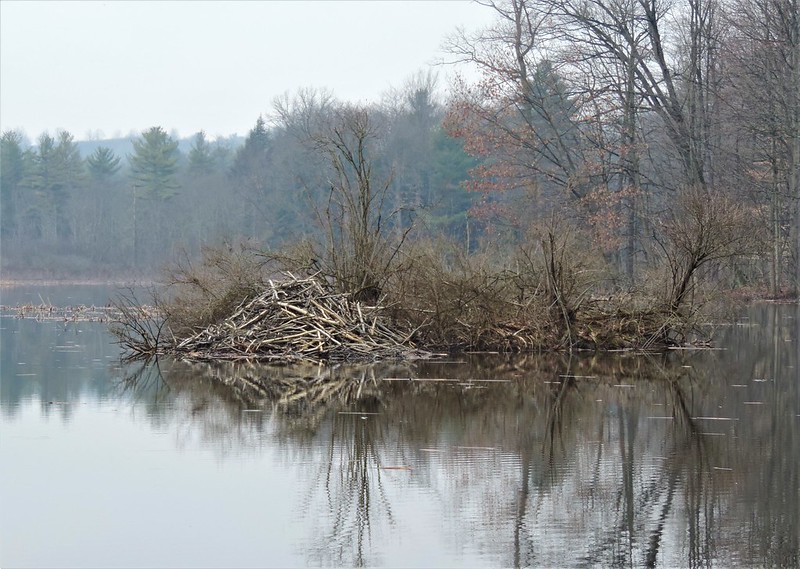There are only a few things more indicative of early spring than mud. As the ground melts from its winter freeze, mud abounds. In more northern regions of New England and the Great Lakes, this time is unofficially called “Mud Season” as we make that sometimes sloppy transition between winter and spring. Mud is often seen as an inconvenience. And I understand, having slid more than driven down a thawing dirt road, unknowingly tracked mud across the carpets, and scrubbed off the result of a muddy dog in my car.

But mud is more than a nuisance. Its versatility and endless possibilities can be attested to by any child permitted to play in mud. From stomping in mud puddles to making that right-of-passage delicacy, the mud pie, mud is full sensory experience. It brings out numerous adjectives — sticky, sloppy, slimy, stinky, smooth. Gross, glorious, gloppy, goopy. Mucky, messy, magnificent mud. And it costs no more than a load of laundry.
The same characteristics that make it a perfect play toy also make it a critical building material for many creatures. Some of the best animal builders use it as cement to hold their homes or nests together.
All year long, beavers are chewing and gathering sticks not just for food but as building material. Beavers are great architects, building both dams and lodges. Dams raise the water level of a stream, and often create a pond behind the dam. In that pond, or along the bank of much deeper bodies of water, beavers build lodges. This structure provides shelter for the beaver to rest, raise young, and find protection. Both creations are built with rocks, grass, and sticks. And mud is the cement to hold it all together.
Birds are another of nature’s amazing builders. Most songbirds build a nest each year, in order to have a safe place to raise young. The shape, size, and materials used are unique to each species. Mud is a regular tool of American Robins. Robins start with dead grass and twigs, then reinforce it with mud they pick up with their beak. It is documented that much of what robins use is the castings of worms.
Both Cliff and Barn Swallows use mostly mud to construct a nest. They first look for a flat, vertical wall with some kind of overhead protection. Common locations are human-built structures such as houses, bridges, large culverts, and old boat houses. The aptly named Cliff Swallow may also build on side of a cliff. They then gather up bits of mud in their beak from along stream banks or puddles. Piece by piece, they build up the nest, just large enough for a clutch of eggs and an adult to incubate the eggs. Barn Swallows create a cup-shaped nest stuck to the vertical surface with a wide opening at the top. Cliff Swallows, create a closed-in, gourd-shaped structure with a hole in the front for entry and exit.

A group of solitary wasps called Mud Daubers use mud to build nests too. They carry balls of mud in their mouthparts to a flat surface. Ball by ball, they build individual rooms, one for each egg. To ensure the larva that hatches from the egg has enough food, the female catches and paralyzes spiders. Each mud compartment may be stuffed with up to 25 spiders. When the larva has eaten all its eight-legged, stored food, it transforms into a pupa and then changes into an adult wasp. Holes may be visible in old nests where the adult chewed its way out of the mud nest.
Certain mud dauber nests can be easily recognized. The long, close-together tubes of the Organ Pipe Mud Dauber are frequently seen on human-built structures such as houses, bridges, and porches. The Potter Wasp makes individual, inch tall structures that are round with a narrow neck looking distinctively like a pot.
For butterflies, mud is food. It seems like a deceptive trick of nature that beautiful, delicate butterflies would use mud. But many species do. Some butterflies engage in a behavior called “puddling” in which they gather and drink from mud puddles. But they may also “puddle” on animal droppings, fermenting fruit, and dead animals. Not our ideal picture of a butterfly, right? But these places provide males with the needed salt and other minerals needed for reproduction. In this instance, mud is food and then a nuptial gift given to the females to lay eggs.
Mud uses don’t end there. Cold- blooded animals such as frogs and turtles will bury themselves in mud for insulation and protection for the winter as they put their bodies on pause. And who can forget pigs wallowing in the mud. It is thought that pigs, along with elephants, hippopotamus, and rhinoceroses use mud as a way to cool off and perhaps even as sunscreen, insect repellent, or to remove parasites from the skin. Even our pottery is made of a very clean, refined kind of mud.
There are multiple uses for the sticky, goopy, messy magnificent mud.

Katie Finch is a Nature Educator at Audubon.
Audubon Community Nature Center builds and nurtures connections between people and nature. ACNC is located just east of Route 62 between Warren and Jamestown. The trails are still open from dawn to dusk but Liberty, the Bald Eagle is currently off display during the construction of the Pamela A. Westrom Wildlife Habitat. You can visit her on her Facebook page. The Nature Center is partially open, including restrooms, the Blue Heron Gift Shop, and some exhibits. More information can be found online at auduboncnc.org or by calling (716) 569-2345.


Recent Comments